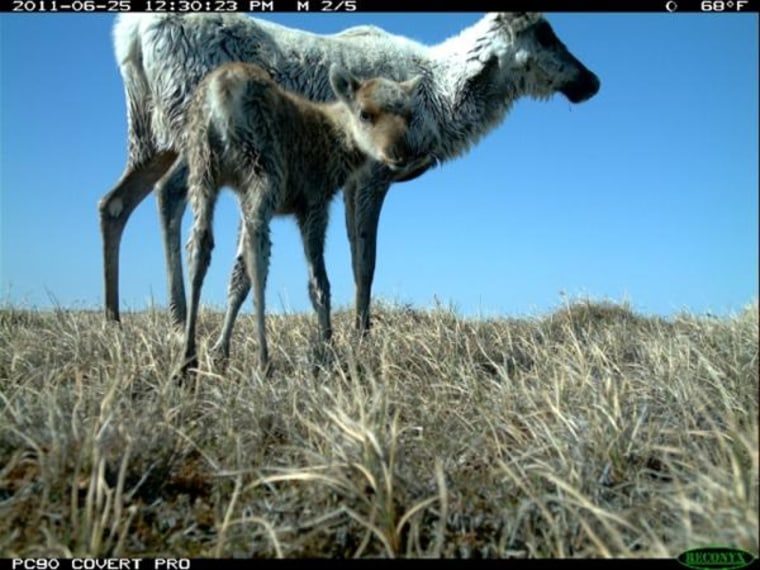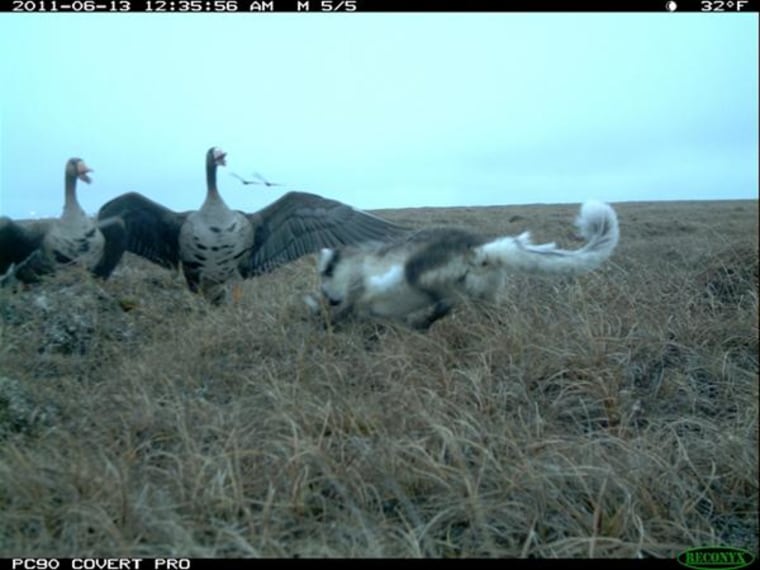A gripping new set of photos from camera traps in the Alaskan Arctic catch animals in the carnivorous act of preying on the eggs and the young of nesting birds, showing how these predators may be benefitting and migratory birds suffering from human activity in the area.
The photos, some of them graphic depictions, were collected during the summers of 2010 and 2011 as part of the Wildlife Conservation Society's ongoing study of how energy development is affecting the region's ecology, including the birds that migrate to the region to nest during the brief Arctic summers.
"Pictures are worth a thousand words, and these photos speak volumes regarding the changing conditions that threaten migratory birds coming to the Arctic to breed," said WCS North America program director Jodi Hilty.
Benefits to predators
The camera traps were set up to identify nest-raiding predators near the Prudhoe Bay oil field and at a remote, undeveloped area near the Ikpikpuk River in the National Petroleum Reserve – Alaska. Scientists hoped to learn whether "human-subsidized" predators (those, such as Arctic foxes, ravens, and glaucous gulls, that apparently benefit from human activity in the area) were raiding nests more often in the oilfields than in the remote areas. They recently reported that for some bird species, the rate of survival was indeed lower in the developed areas because of the increased presence of predators.

"The presence of people and structures enable these animals to live in areas that otherwise would not be preferred or suitable habitat, or to do so in greater numbers than would normally be the case. As a result, they have more access to the nests of migratory birds and can exploit a vulnerable food source," said WCS scientist Joe Liebezeit.
Predators find that human-made structures can provide them and their young with protective shelter. Arctic foxes, for example, den in culverts and under buildings in the oil fields. Ravens, which otherwise would not nest on the treeless tundra, are taking advantage of towers, eaves of buildings and other structures across the transformed landscape.
These "generalist" species also benefit by consuming the garbage, roadkill and other sources of food brought by human activity.
Bird threats
Each year, an international assemblage of migratory birds numbering in the millions flies to Alaska's Arctic to breed and rear young.
Wildlife Conservation Society scientists recently released findings that compared nest survivorship (production of young) and other nesting patterns in the Prudhoe Bay region with a site in the undeveloped Teshekpuk Lake area of the National Petroleum Reserve 150 miles to the west. They found that, for some species, survivorship and overall nest densities were higher at the undeveloped Teshekpuk site.
"The photos are also a reminder of the value of undeveloped areas in the Arctic to birds from all over the world," Hilty said in a statement.
